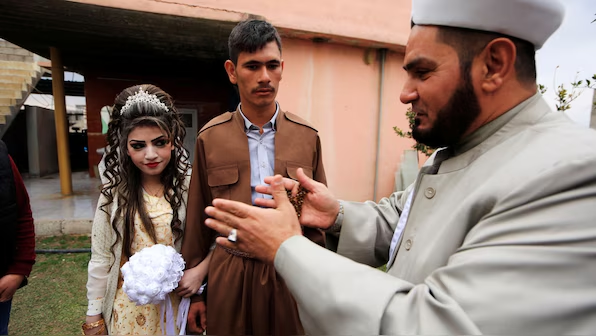Child marriage remains a pressing global issue, with recent developments in Iraq highlighting the ongoing challenges in combating this human rights violation. Despite progress in many regions, millions of girls worldwide still face the prospect of early marriage, often with devastating consequences for their health, education, and future opportunities.
Iraq’s Controversial Proposal
In a shocking move, Iraq is considering lowering the legal marriage age for girls from 18 to 9 years old. This proposed amendment to the country’s Personal Status Law has sparked widespread outrage both domestically and internationally. The draft bill, introduced by Independent MP Raed al-Maliki, would also allow boys as young as 15 to marry, effectively legalizing child marriage in the country.The proposed changes would not only reduce the marriageable age but also potentially deprive women of rights to divorce, child custody, and inheritance. Critics argue that this amendment would erase decades of progress in women’s rights and essentially legalize child rape. The United Nations Children’s Fund (UNICEF) reports that over 28% of women in Iraq are already married by the age of 18, highlighting the existing prevalence of child marriage in the country.

Global Trends in Child Marriage
While Iraq’s proposal is particularly alarming, child marriage remains a global concern. According to UNICEF, an estimated 640 million girls and women alive today were married in childhood. The practice is most prevalent in South Asia, which accounts for 45% of all child brides worldwide, with India alone representing one-third of the global total.Despite these staggering numbers, there has been a gradual decline in child marriage rates globally. Today, one in five young women aged 20 to 24 were married as children, compared to nearly one in four a decade ago. However, progress has been uneven across regions, with West and Central Africa showing little improvement over the past 25 years.
Legal Ages and Variations Worldwide
The legal age for marriage varies significantly across countries. While many nations have set the minimum age at 18, some still allow marriage at younger ages with parental consent. For instance, Afghanistan and Yemen permit marriage at 15 for both men and women with parental approval. In Iran, girls can marry as young as 13 with parental consent.On the other end of the spectrum, countries like Slovenia, Estonia, and Hungary have some of the highest average ages for first marriage, with women typically marrying in their early 30s. This trend towards later marriage is increasingly common in developed nations, reflecting changing social norms and economic factors.
Challenges in Ending Child Marriage
Despite global efforts to end child marriage, progress has been slower than hoped. At the current rate, it is estimated that it could take another 300 years to eliminate the practice entirely. Factors such as poverty, conflict, and climate change continue to exacerbate the risk of child marriage in vulnerable communities.The COVID-19 pandemic has further complicated efforts to combat child marriage, with school closures and economic hardships potentially pushing more families to consider early marriage for their daughters. Additionally, cultural traditions and deeply ingrained gender inequalities in some societies continue to perpetuate the practice.
The Way Forward
Ending child marriage requires a multifaceted approach involving legal reforms, education, and community engagement. Many countries have strengthened their laws against child marriage in recent years, but enforcement remains a challenge in some areas. Empowering girls through education and economic opportunities is crucial in preventing early marriages and breaking the cycle of poverty.International organizations and local NGOs play a vital role in raising awareness about the harmful effects of child marriage and supporting communities in abandoning the practice. Engaging religious and community leaders can also be effective in changing cultural norms and attitudes towards early marriage.As the world approaches the halfway point to the 2030 Sustainable Development Goals, which include ending child marriage, it is clear that accelerated efforts are needed. While progress has been made, the recent developments in Iraq serve as a stark reminder of the ongoing challenges in protecting children’s rights and ensuring a future free from child marriage.
Sources:
https://www.firstpost.com/explainers/iraq-to-lower-marriage-age-for-girls-what-are-worlds-lowest-marriage-ages-13834385.html
https://www.unfpa.org/child-marriage
https://worldpopulationreview.com/country-rankings/age-at-first-marriage-by-country
https://data.unicef.org/resources/is-an-end-to-child-marriage-within-reach/
https://en.wikipedia.org/wiki/List_of_countries_by_age_at_first_marriage
https://www.child-identity.org/unicef-is-an-end-to-child-marriage-within-reach-latest-trends-and-future-prospects/
Cover photo from https://www.child-identity.org/
